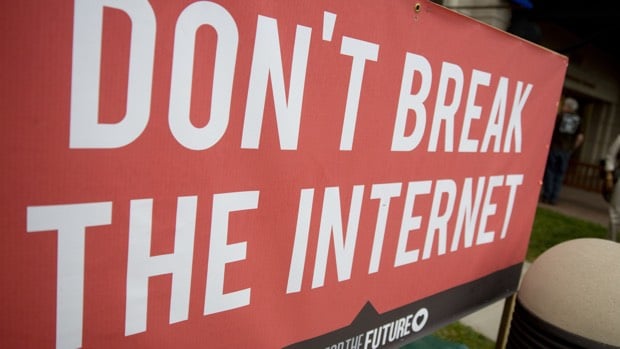After months of public debate in the US leading to that country’s law makers deciding in favour of net neutrality, the issue is now of vital concern to India’s internet users. A lot of media coverage has been given to how mobile operators like Vodafone and Airtel are planning to profit at the expense of its consumers by flouting the principle of net neutrality, but this impacts more than just mobile networks. It will also affect your home internet connections, and by consequence, your online gaming.

To put it simply, net neutrality states that once you pay for your internet connection – whether its to your mobile service or home internet provider – you should have unrestricted access to the internet, and those service providers should not interfere with or dictate what you can or can’t access. But telecom companies are trying their best to profit from breaking this basic principle, and they can do this in two ways. One is by making access to a certain service free/non-billable (eg: Bing), while access to competing services (eg: Google) will be charged. The other is by giving full-speed access to one service, while throttling/reducing speeds to its competitors.
Net neutrality is already being breached in India. According to our sources, Pritish Nandy Communication’s video streaming service, Ogle, had to delay its launch plans after several beta users on certain internet providers – one of them being MTNL – were unable to properly stream the service, while those (me included) on other services were able to access the service just fine. It forced Ogle to strengthen its server network in order to prevent this sort of throttling of its services. That not only delayed the launch, but surely cost Ogle – a start-up – a lot of money. That would not have happened if the service providers in question had been bound by law to observe net neutrality and not be persuaded by a fat cheque from what I can only assume was a rival video streaming service.
Telecom companies have even got the telecom regulatory body, TRAI, to bend to their will, drafting an illogical consultation paper in favour of breaking net neutrality, and we should all be concerned. This article has more details on this issue, as well as how you can go about making yourself heard.
How it impacts gaming
Gaming is moving online at an increasingly rapid pace, across console, PC and mobile platforms. As if the low speeds and high prices of broadband internet in India weren’t problem enough, service providers breaching net neutrality could become an even bigger problem for us. Gaming is not as big an industry in India as it is in other parts of the world, but the bandwidth requirements for downloading games and playing them online are high, so there would be nothing stoping service providers from throttling connections speeds for gaming services.
Even if services like Steam, Xbox Live or PSN were open to the idea of paying service providers for unrestricted access to their services, India simply isn’t a big enough market for them to bother. What’s more, Indian companies with deep pockets that are active in the games industry, like for example, Reliance, could hypothetically aim to throttle/curb access to any gaming service it deems as a threat.
Airtel is already doing something similar with its Zero initiative. It’s allowing companies – Flipkart being one of its most high-profile clients so far – to sign up with it and it is accepting money to allow these companies’ apps and services to be accessed for free on its network. So we could be in a situation where you can download mobile games from big publishers like EA and Reliance without being billed, while others will. This will further stack the odds against smaller publishers, start-ups and indie developers, who have a hard enough time already trying to find an audience.
What you can do
US legislators were faced with some very strong lobbying (aka millions of dollars spent backing various politicians in decision-making positions) from telecom companies to allow them to break net neutrality, and the only reason those lobbying efforts failed was the overwhelming public response. And an overwhelming public response is what’s required if net neutrality is to be upheld in India, and that’s where you come in.
There are three ways in which you can make yourself heard on this issue, courtesy Quartz.
2. Send a letter directly to TRAI at advqos@trai.gov.in. You can use the following sample letter, tweak it to your liking, or write your own. Or you can head over to savetheinternet.in, which has a more simplified process for you to email TRAI.
Dear TRAI,
I am writing to express my concern against the actions that telecom carriers are taking to restrict fair access to the internet (net neutrality). I believe the internet is a vital resource—it helps me communicate, work, and thrive as a citizen. If telecom operators can discriminate internet traffic on the basis of which services pay the most, we are allowing telcos control over a vital and necessary technological resource. By doing so we allow them to define what information we can view; what entertainment we can access; and how companies can innovate.
This is completely unfair and harms India’s long term role in the global market. I strongly believe the growth of telecoms and the well-being of the internet can go hand-in-hand. I’m asking for a framework to ensure long term and fair access for all services regardless of size. I want my generation and those that come after me to have unfettered access to the Internet, with no telcos or ISPs having the ability to charge for specific services I use on top of it. Please understand that the internet is an important resource and vital to me and to every other Indian citizen. I would like to see it kept free and protected under Net Neutrality to ensure fair and equal access for all and forever.
Regards,
[Your Name]
3. Reach out to Communications and Information Technology Minister of India Ravi Shankar Prasad and tell him to preserve net neutrality. If you don’t know him personally (chances are you don’t), you can tweet at him @rsprasad.
Let’s put it this way – it could make the difference between a 50ms and a 250ms ping in Battlefield 5.



